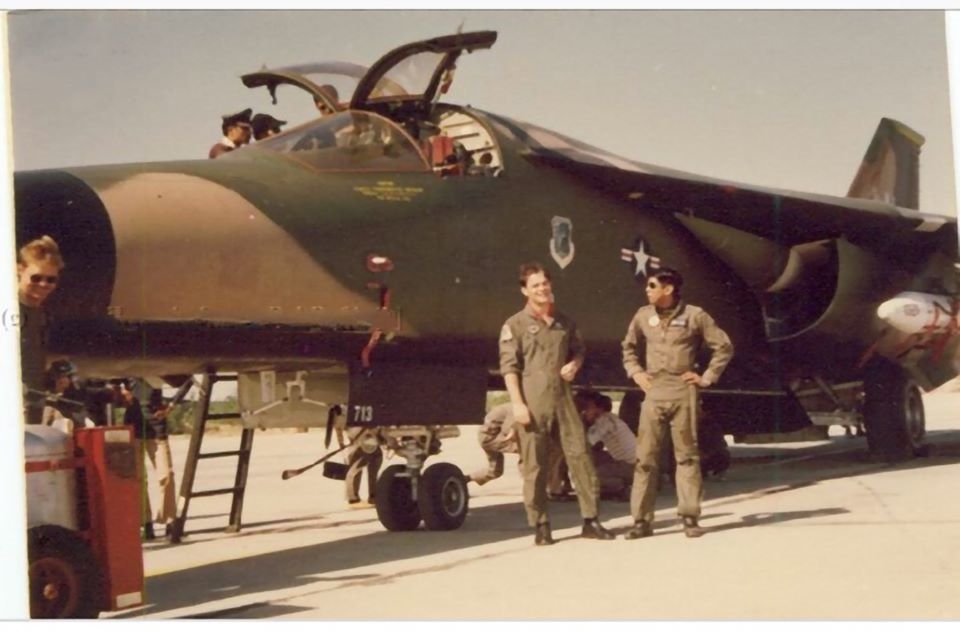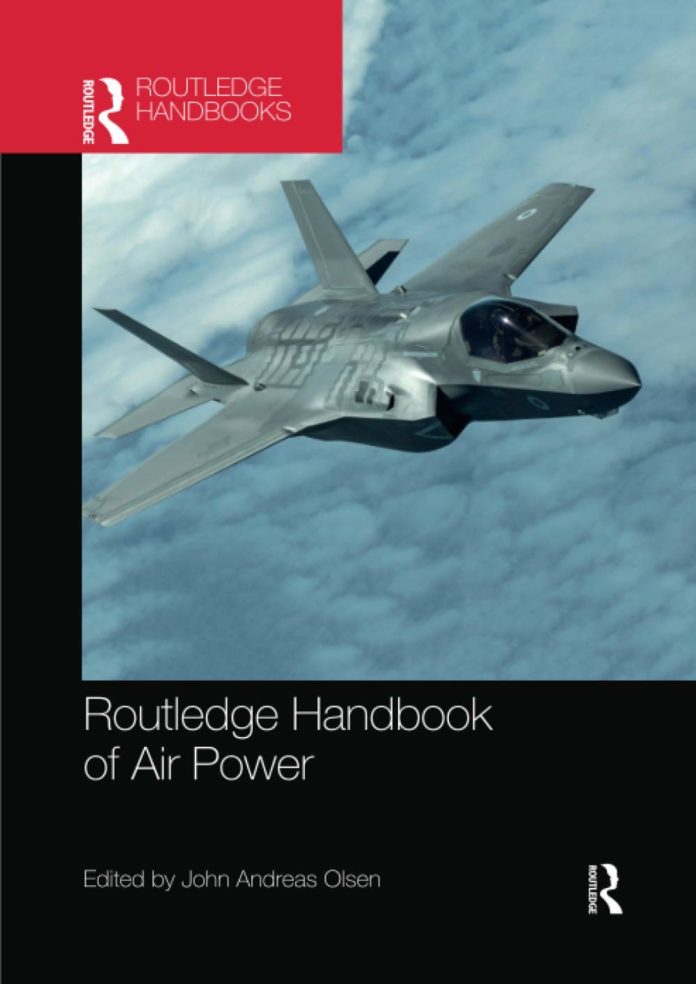Routledge Handbook of Air Power is a comprehensive study of various aspects of air power, ranging from the historical to the futuristic. It examines as many as thirty topics related to the utility and applicability of contemporary air power. The book is edited by John Andreas Olsen, a serving Colonel in the Norwegian Air Force, and a visiting Professor at the Swedish Defence University. He is also a Senior Fellow at the Mitchell Institute for Aerospace Studies. He has a doctorate from De Montfort University. Olsen has authored Airpower Reborn (2015) and Airpower Applied (2017).
The contributors to the book include an extraordinary group of scholars as well as practitioners of air power from all over the world. It goes to the credit of the editor Col Olsen to have managed a coherent treatise, which progresses seamlessly from one topic to the other. Clearly, the overall theme, as well as the scope of individual topics has been well thought out; it has been spelt out by the editor to various authors precisely and clearly, which helps maintain focus on the essentials of airpower. A student of air power studies could not agree more with the words of the editor regarding the book when he says that it “provides a cutting edge, critical, and comprehensive survey of the phenomena of aerospace power.”
The book is divided in five parts, each consisting of six chapters. The first part covers the fundamentals of air power and covers the broad developments and experiences in various wars. This part presents the nature, character and key features of airpower, analysing the basics for an understanding of its place in modern warfare. Most importantly, it examines what modern air capabilities bring to the political table. It offers clarity on how air power can contribute to national policy and strategy, rather than merely executing war plans. It calls to attention the breadth of the subject to the reader.
The second part details the operational depth of air power, including its roles and functions, as well as its application. The core roles of air power are discussed, these include: 1) ability to achieve control of the air for conduct of safe and secure operations, 2) ability to strike so as to coerce or alter the behaviour of an adversary, 3) ability to gather information to improve situational awareness and optimise decision-making, and 4) ability to rapidly move personnel and equipment to enable operational and tactical manoeuvres.
The third part discusses the integration air power into joint, multi-national and interagency environments. It highlights a truism that while air power can create decisive effects on its own, air capabilities are always more effective when combined with other instruments of power. It talks of the importance of air-land and air-sea integration for a comprehensive projection of air power.
The fourth part covers the international context of air power. The important aspect of external factors that influence employment of air power is discussed, with the objective of developing a thorough understanding of its consequences. This part also looks at a wider strategic context, including the political imperative of combat airpower, lessons from multi-national operations, the cost of combat air power, and the relationship of industry and air power.
The fifth and final part offers some national perspectives that go beyond the usual Anglo-American narratives that dominate the book. Development of air power from among a selection of non-Western countries including China, Russia, India, Pakistan, Brazil and Japan is examined. These case studies focus on air power that has distinctive characteristics derived from different geo-political, ideological, economical and cultural factors. Short and long-term challenges faced by these countries, and how they shape their respective air forces are analysed.

The case study of Pakistani air power has been done by PAF’s former fighter pilot Air Cdre Jamal Hussain, who currently heads the Centre for Air Power Studies in Karachi. Jamal traces the development of the PAF from a small service in which daredevilry and heroics were considered a virtue, and safety was of least concern. With the signing of the US Mutual Defence Assistance Agreement in 1954, the composition and quality of the PAF started to take a turn for the better, and a premium was laid on operational readiness and flight safety.
By the time the 1965 War broke out, PAF was in a position to outperform the IAF that was three times its size. Its forte was air combat in which it established a clear2:1 superiority over the IAF. After the war, when sanctions were imposed by the US, the PAF was able to rapidly re-equip with Chinese F-6 and French Mirage III fighters, along with the somewhat surreptitious procurement of used West German Sabres. When the PAF again went to war in 1971, its performance was creditable despite the overall military defeat. Jamal highlights that the combat loss rate of both air forces was at par, despite the much bigger size of the IAF. In aerial kills, it retained a superiority of 1.8:1 vis-a-vis IAF, quite similar to that in 1965.
Jamal also highlights the well-known participation of PAF in Middle East wars, in which it bested the Israeli Air Force on several occasions.
Jamal traces PAF’s efforts towards self-reliance which resulted in two major dividends. The Swedish designed MFI-17 primary trainer was indigenously manufactured, and fulfilled PAF and Pak Army needs, as well as those of the export market. The Pak-China jointly designed and manufactured JF-17 fighter has started to replace the aging F-7 and Mirage III/5 fighters. The mainstay of Pakistan’s airpower would rest on the most modern F-16A, F-16C and JF-17 fighters that give it a full spectrum capability in the conventional as well as nuclear domains.
In this case study of Pakistani air power, Jamal makes a convincing justification for Pakistani air power to be bracketed alongside the likes of Russia, China and India, as has been done by Col Olsen, the editor of the book. He thinks that PAF has the ability to out-think as well as out-fight the enemy, and it is this credo by which the PAF swears and lives.
A chapter on the Indian Air Force briefly covers both the 1965 and 1971 Indo-Pak Wars. Regrettably, the author of this chapter, Sanu Kainikara, incorrectly quotes the Official History of Pakistan Air Force (1988) as acknowledging the loss of 56 aircraft (page 331). In fact, none of the PAF official history books acknowledge anything more than half that number. It is possible that the author may have mixed up an Indian publication with that of the PAF history, and mistakenly quoted the wrong source. It is, however, felt that the error should be brought on record to caution the readers of this inaccuracy in an otherwise very well edited book.
In his concluding remarks, Col Olsen agrees that air power may not be the principal player in warfare, but it invariably enables everything else in force employment as either an agent of kinetic effect, or an enabler of land and naval forces. He highlights the single most important lesson that even the most robust air weapon can never be more effective than the policy and strategy it is intended to support. Olsen thinks, “true mastery of air power lies in commitment to professional light, technological innovation, conceptual imagination and strategic acumen.” This book communicates these qualities of air power to the wider public, as well as the political and military leaders to make strategic decisions.
The book is priced at a rather dear £175.00 which is likely to be beyond the reach of all but the most keen air enthusiasts. However, the book is highly recommended for libraries of the National Defence University and the War and Staff Colleges of the three services. The book should also be useful to all those who deal with matters of defence, whether in the government, or in private think tanks.





